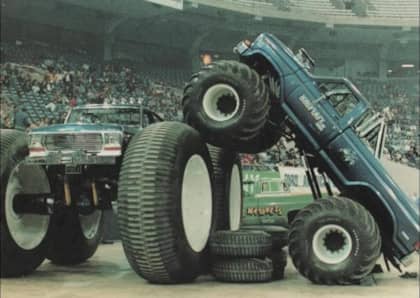1986-1992 Jeep Comanche Compact Pickup Delivered Off-Road And On
The Honda Ridgeline is a frequent target of skepticism from traditional pickup fans who aren't quite convinced that a unibody design is as capable as a full-frame when it comes to towing, hauling, or off-road shenanigans. 30 years ago, however, there was another new truck on the block that also broke with tradition by featuring a platform design more commonly associated with cars than rugged trail machines: the Jeep Comanche.
Often lost in the hype of today's Jeep Gladiator, the Comanche was until the 2020 model year the most recent pickup offered by the popular SUV brand. Like the Gladiator, the Comanche rode on the wave of success generated by its platform-mate, in this case the Jeep Cherokee, which had been introduced to great acclaim only a few years earlier and which in many ways revolutionized the compact SUV space.

The Comanche wouldn't prove to be nearly as successful for Jeep among small truck buyers, but it offered a strong alternative to standard Detroit fare and delivered a degree of all-terrain acumen few of its rivals could match.
Shortcut To Success
The genesis of the Comanche was a simple one. By the mid-80s, vehicles like the Ford Ranger and the Chevrolet S-10 had emerged to do battle with the popular Toyota Truck for the hearts and minds of compact pickup buyers. Jeep, which was about to be swallowed whole by Chrysler, was on the outside looking in.
Enter the XJ Cherokee, the last-ditch effort from AMC-era Jeep to innovate an entirely new product. It was a smash among SUV fans, and as a result the company turned to its right-sized platform as a jumping off point for a pickup.

It was an interesting challenge for AMC engineers. Given that the Cherokee rode on a unibody platform, the idea of cutting it up and grafting on a cargo bed took a little extra planning. The removable bed, that is to say, one that wasn't linked to the cab of the truck through the body structure, was the first of its kind for a unibody vehicle, and it required a subframe underneath to keep its link to the front end of the truck strong.

Like the Cherokee, the Comanche used a coil spring front end centering a solid axle, with another live axle supported by leaf springs in the back. Buyers could choose between street and trail-oriented shocks. The Comanche was remarkably capable off-road as a result, with excellent wheel articulation helping to make short work of uneven terrain, and its suspension design would be in part replicated by later Jeep models like the TJ and the Grand Cherokee. It additionally provided excellent payload capacity of above 2,000 lbs, which was a step up over any other similarly-priced truck.
Best In Class Power
Also helping the Comanche parse the rough stuff was a shift-on-the-fly four-wheel drive system (not a given in the mid-80s), as well as a progression of four and five-speed manual transmissions and of course a four-speed automatic (with availability changing as the truck continued to evolve).

The cupboards were initially bare at AMC when it came time to give the 1986 model an engine, with a Peugeot-sourced turbodiesel four-cylinder joining a bought-from-General-Motors V6, and a gas-powered four-cylinder. Help was on the way: the following year a 4.0-liter six-cylinder (the last engine AMC would ever produce) was the go-to power plant for the Comanche, and it would range from 173 horsepower to 190 horsepower during the life of the vehicle (and go on past the year 2000 under the hood of the Cherokee).

That was a fair amount of grunt for a truck at the time that the Comanche was offered, and it had Jeep looking not just at its traditional rock crawling crowd (which it courted with SCORE entries), but also the street performance scene. To this end, it not only introduced the rear-wheel drive Eliminator model, which look quick and performed well, but also took to the Bonneville salt flats and SCCA sport truck road course racing.
Never Got The Numbers
It was a concerted effort to introduce the all-new truck to as many potential buyers as possible, but regardless of the hype and the Comanche's merits, Jeep was stuck playing catch-up to Ford, Chevrolet and GMC when it came to sales figures.

Combine this with the fact that Dodge had a small truck of its own to protect (the Dakota) from its in-house rival, and the fact that Jeep was making far more money selling the Cherokee than it was chopping them down on the same assembly line as the Comanche, and the decision was an easy one. 1992 was the final model year for the truck.
Today the Comanche's modest sales numbers see it largely overlooked by collectors, which in general have had little interest in 80s-era compact trucks. The renewed enthusiasm for the Gladiator, however, has more than a few fans of the brand looking backward, shining a brighter spotlight on the formidable little pickup than it's enjoyed in years.
Curious about another 80s-era Jeep? Check out our guide to the Grand Wagoneer.











